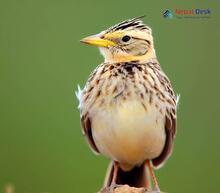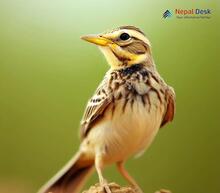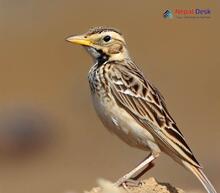The bird world boasts an incredible diversity of species, each with its distinct evolutionary paths and ecological roles. One such captivating group is the Melanocorypha genus, consisting of a variety of intriguing lark species with unique features and adaptations. In this blog post, we'll dive into the amazing world of Melanocorypha larks, discussing their evolution, classification, appearance, habitats, and presence in Nepal.
Tracing Back Their Roots and Classification
Melanocorypha falls under the Alaudidae family and is one among the twenty-five genera making up the assorted lark family. Although the exact origin of this interesting genus sparks ongoing debates among bird experts, it's mostly agreed upon that Melanocorypha comes from Asia. The genus encompasses six recognized species spread across Eurasia's extensive grasslands and semi-deserts.
An Insight into Their Appearance
Usually medium to large-sized songbirds with sturdy bodies, Melanocorypha larks have powerful legs and feet adapted for a ground-dwelling lifestyle. Their plumage generally showcases earthy hues such as brownish-grey or sandy colors that allow them to blend in effortlessly with their surroundings. A notable trait is their crest which varies in size among individuals and can be raised or lowered in response to mood or behavior.
Habitats and Way of Life
Melanocorypha species flourish in open spaces like grasslands, steppes, semi-deserts, and elevated plateaus with sparse vegetation. These environments provide ample opportunities for these terrestrial birds to hunt insects and seeds without much competition from other avian species.
These larks display several unique habits that enable them to thrive in challenging environments. For instance, they craft well-camouflaged nests close to the ground to safeguard against potential predators.
Melanocorypha Larks in Nepal
Situated at the edge of the Melanocorypha genus' distribution territory is Nepal, a small yet ecologically diverse nation in South Asia. Of the six Melanocorypha species, the Calandra Lark (Melanocorypha calandra) has been observed throughout Nepal's western grasslands. Their scattered presence across this area is due to their preferred habitats and wandering nature.
Protecting the Melanocorypha Genus
Much like many bird species, Melanocorypha larks encounter various difficulties due to human-driven shifts in their natural homes. Agricultural development and urban sprawl have resulted in the fragmentation of vital grassland regions, impacting these birds' breeding areas. As such, conservation initiatives are crucial to safeguard these exceptional ecosystems and ensure the long-term survival of Melanocorypha larks and other grassland-dwelling creatures.
Recognizing and valuing avian biodiversity is key to shaping effective conservation plans. The Melanocorypha genus serves as a prime example of bird adaptation within lesser-studied ecosystems that demand our care and protection. By acknowledging their ecological significance, we can work towards a world where Melanocorypha larks and other species continue to thrive across their entire geographic range.




